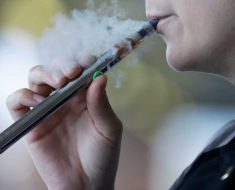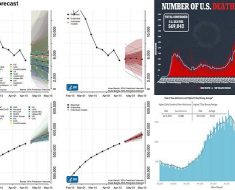The Centers for Medicare & Medicaid Services (CMS) has released a proposal for changing the reimbursement for lung cancer screening. The change would lower the age of eligibility for beneficiary reimbursement to 50 years (from the current 55 years).
Comments on the proposal can be made through December 16, 2021.
The move would bring Medicare and Medicaid reimbursement in line with current recommendations for lung cancer screening from the US Preventive Services Task Force (USPSTF). Medicaid coverage is currently uneven, and not all state programs cover it.
The USPSTF changed its recommendations for lung cancer screening earlier this year. In the updated final recommendations, the age at which screening starts was lowered from 55 to 50 years, and the criterion regarding smoking history was reduced from 30 to 20 pack-years.
That move nearly doubles the number of people who are now eligible for screening to 14.5 million individuals ― an increase of 81% (6.4 million adults) from their 2013 recommendations.
“This is great news because it means that nearly twice as many people are eligible to be screened, which we hope will allow clinicians to save more lives and help people remain healthy longer,” commented John Wong, MD, chief science officer, vice chair for clinical affairs, and chief of the Division of Clinical Decision Making at the Task Force, at the time.
One difference between the USPSTF recommendations and the changes that CMS is proposing for reimbursement is the recommended age at which screening should end. The USPSTF recommends screening until age 80, while the CMS cutoff is age 77.
CMS also notes that before Medicare beneficiaries could undergo their first low-density CT (LDCT) screening for lung cancer, they would need to have a counseling and shared decision-making visit that meets the following criteria and is documented in the beneficiary’s medical records:
-
Determination of beneficiary eligibility;
-
Shared decision making, including the use of one or more decision aids;
-
Counseling on the importance of adhering to annual lung cancer LDCT screening, the impact of comorbidities, and the ability or willingness to undergo diagnosis and treatment; and
-
Counseling on the importance of remaining abstinent from cigarette smoking if the patient is a former smoker or of the importance of smoking cessation if the patient is currently a smoker and, if appropriate, furnishing of information about tobacco cessation interventions.
Uptake Limited
The uptake of lung cancer screening is still very limited, ranging from 6% to 18% of individuals who meet the eligibility criteria.
“The science is clear that lung cancer screening has the potential to save lives,” Wong from the USPSTF told Medscape Medical News in a past interview. “We recognize that there are existing barriers to screening everyone who is eligible, but clinicians and patients both deserve to know that screening can detect lung cancer early, when treatment has the best chance of being beneficial.”
He added that it is hoped that these recommendations will encourage clinicians to examine the barriers to effective lung cancer screening in their communities and to do what they can to improve implementation. “We also hope to encourage patients to have conversations with their clinicians about whether they are eligible for screening and to discuss smoking cessation treatments if they are still smoking,” Wong added.
For more from Medscape Oncology, join us on Twitter and Facebook.
Source: Read Full Article





